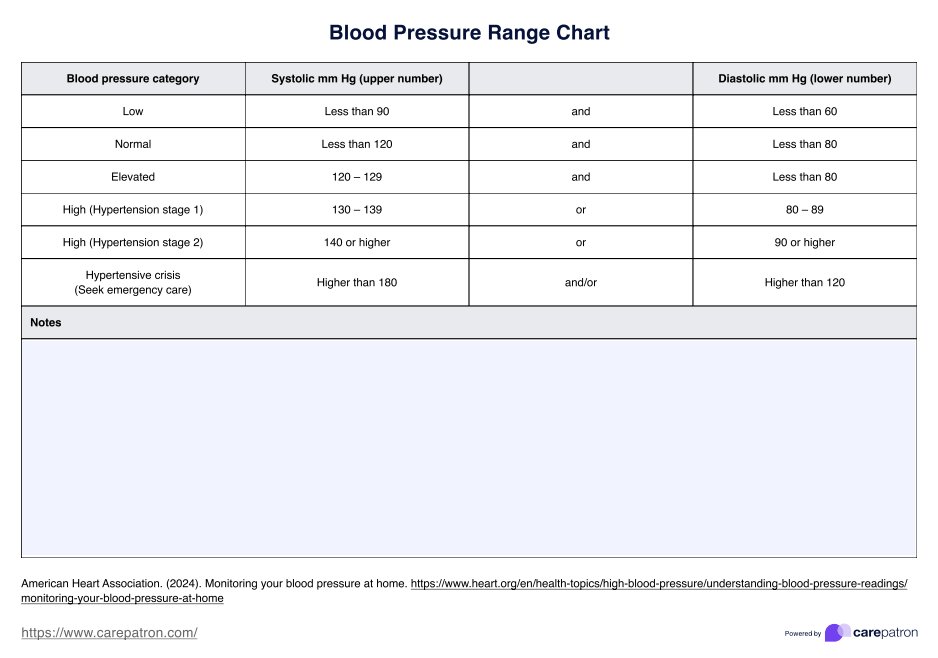Having a family history of hypertension and cardiovascular problems, drinking alcohol, smoking, being obese, high sodium diets, and not exercising.

Blood Pressure Range Chart
Learn about the different blood pressure ranges and download our Blood Pressure Range Chart PDF template.
Use Template
Blood Pressure Range Chart Template
Commonly asked questions
Dehydration, Parkinson’s Disease, irregular heart rhythms, recreational drugs, alcohol, extreme cold temperature, and being pregnant, to mention a few.
By exercising regularly, having a healthy and balanced diet, limiting or avoiding alcohol, avoiding smoking, and learning how to manage their stress properly.
EHR and practice management software
Get started for free
*No credit card required
Free
$0/usd
Unlimited clients
Telehealth
1GB of storage
Client portal text
Automated billing and online payments











